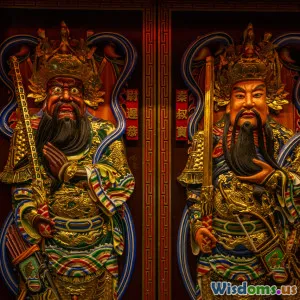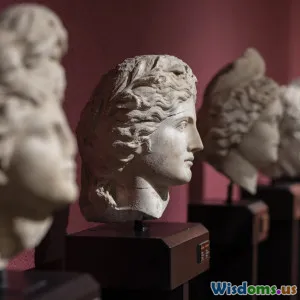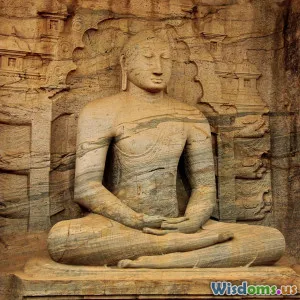
A Step by Step Guide to Creating Your Own Myth Inspired Character
8 min read Discover how to craft a captivating myth-inspired character with this detailed step-by-step guide. (0 Reviews)
A Step by Step Guide to Creating Your Own Myth Inspired Character
Mythological figures have long captivated human imagination—from the wrath of Zeus to the cunning of Anansi. These characters embody archetypes, teach lessons, and connect us to cultures long passed. But what if you could create your own myth-inspired character? A figure grounded in the richness of tradition yet fresh and personal? This guide will take you through the exhilarating process of bringing such a character to life, step-by-step.
Introduction: The Power of Mythical Characters
Why do myths endure? Because they resonate deeply within us—tapping into universal truths, fears, desires, and mysteries. Characters drawn from these stories often symbolize aspects of humanity or nature, making them timeless. Creating your own myth-inspired character is more than an exercise in imagination; it’s an opportunity to craft a new legend, a fresh narrative that might one day inspire others.
Step 1: Choose Your Cultural or Thematic Foundation
Mythology is vast and varied—Greek, Norse, Egyptian, Indigenous, Chinese, and beyond. Each tradition brings unique angles on gods, creatures, morals, and cosmology.
- Research Broadly: Spend time exploring myths from different cultures. Note motifs or themes that intrigue you.
- Select a Focus: Maybe Norse frost giants resonate, or the trickster spirits of West Africa fascinate you.
Example: The Greek god Hermes is known as a messenger and trickster. Incorporating trickery and speed as key characteristics could frame your character’s essence.
This foundation will anchor your character's abilities, backstory, and cultural context.
Step 2: Define Your Character’s Origin Story
The origin shapes motivation and personality. Mythic origin stories often involve divine birth, cosmic events, or mortal encounters with supernatural forces.
- Decide on Mortal or Divine: Is your character a god, demigod, spirit, or human with extraordinary gifts?
- Identify Birth or Creation: Was your character forged from fire, born of a goddess, or awakened by a celestial comet?
- Incorporate Symbolism: Use natural elements or mythical phenomena symbolically. For example, a character born during a solar eclipse might wield shadow and light.
Real-World Insight: According to Joseph Campbell’s monomyth concept, an archetypal hero often starts from humble or mysterious origins before ascending to greatness.
Step 3: Craft Distinctive Powers and Attributes
Mythological characters often possess unique powers that reflect their roles or symbolism.
- Tie Powers to Origin: Fire powers suit a volcanic birth; water control fits a character birthed from the ocean.
- Balance Strengths and Weaknesses: Every hero has limits. Achilles’ vulnerable heel made him compelling.
- Include Personality Traits: Are they wise, mischievous, vengeful, or compassionate?
Example: The Hindu goddess Saraswati epitomizes wisdom and the arts. If your character embodies wisdom, powers related to knowledge, music, or the spoken word could enrich their myth.
Step 4: Establish Your Character’s Role and Archetype
Decide how your character fits into their mythological world and narrative.
- Archetypes: Hero, trickster, mentor, destroyer, guardian, or creator.
- Motivations: Quest for justice, vengeance, redemption, balance, or chaos.
- Relationships: Allies, enemies, divine family, mortal followers.
Aligning your character’s arc with clear motives and archetypes creates depth and makes storytelling easier.
Step 5: Envision the World and Culture Around Your Character
A mythic figure does not exist in a vacuum. Their character is enriched by the world they inhabit.
- Create Mythical Landscapes: Enchanted forests, celestial realms, underworld domains.
- Cultural Practices: Festivals, rituals, taboos associated with your character.
- Symbolism in Architecture or Art: Items or artifacts tied to them can be powerful storytelling tools.
Example: The Egyptian god Anubis is inexorably linked to funerary rites and tombs. Your character’s environment could similarly enhance their narrative presence.
Step 6: Develop Visual and Narrative Details
Imagery helps a character leap off the page or screen.
- Appearance: Distinctive features like wings, glowing eyes, or elemental markings.
- Attire and Weapons: What weapons, jewelry, or robes signify their status?
- Stories and Legends: Compose anecdotes or myths that explain their deeds or morals.
Quote: Neil Gaiman famously said in American Gods, “People believe in things because they want to believe in them.” Crafting vivid imagery makes belief easier.
Step 7: Reflect on the Character’s Legacy or Lesson
Many mythic characters carry a lesson or moral significance.
- What does your character symbolize? A natural force? Human emotion? A virtue?
- What message do they convey? Courage against odds, the duality of nature, or the consequences of hubris?
- How might your character inspire? Could they be a symbol for resilience, change, or caution?
Such thoughtful reflection lends timelessness.
Conclusion: Bringing Your Myth Inspired Character to Life
Creating a myth-inspired character is a journey through imagination, culture, and storytelling. It requires blending historical truths with inventive fantasy, archetypes with personal flair. With a strong foundation, purposeful challenges, and vivid narrative, your character can move beyond mere creation to become a legend in their own right.
Now, equipped with this step-by-step guide, dive into crafting your own mythic figure—because new legends await only your pen or keyboard.
Further Reading and Inspiration
- The Hero with a Thousand Faces, Joseph Campbell
- Mythology: Timeless Tales of Gods and Heroes, Edith Hamilton
- Norse Mythology, Neil Gaiman
- Online repositories such as Theoi Greek Mythology and Native Knowledge 360° by the Smithsonian
Harness the power of myth to create a character that stands the test of time!
Rate the Post
User Reviews
Popular Posts





















